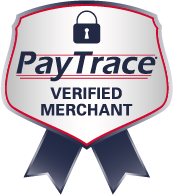Most business leaders know their reputation means everything. At the start of a new venture, though, there’s no reputation to live or die by. Emerging from the mist to establish your presence and credibility isn’t easy, especially when you’re up against the stiff, broad competitive of online businesses from around the globe.
Building a following online isn’t easy. Some businesses never figure it out, and it proves their downfall. Not only does the technology intimidate some managers and executives, but the relatively short history of online branding and building a social following makes it tough to know which best practices to follow.
Enough businesses have found digital success, though, that we do have some understanding of the ingredients making up a successful online strategy. If you’re struggling to build a following and credibility among your target consumers, here are some key tips to implement.
Keep Posts Informative and Relevant
Every time you publish a blog, post a Facebook status or fire off a tweet, ask yourself this question: Do my target consumers care? If they do, then you’ve got a successful piece of content. If not, dispense of that idea and move on to something else. Online consumers can be very impatient when it comes to irrelevant content–not only will they decline to share the content, but they might decide you aren’t a brand they want to follow.
Useful content, by contrast, is more likely to be engaged and shared, thus reaching new consumers. A keen understanding of your target audience is vital, but the more valuable this content is to those individuals, the better off you’ll be in the long run.
Display Your Authority and Expertise
 Early on, you want to create content that shows you are an expert in your field. Sharing content from other resources and offering great consumer advice are great, but you need to demonstrate the value of your own brand. Some of your content should be dedicated to the recent work you’re doing, the unique angle you are taking on a common problem, or other characteristics that make your business stand out from others. Customer service, efficiency, office culture, you name it–find a way to distinguish yourself and craft content reflecting this.
Early on, you want to create content that shows you are an expert in your field. Sharing content from other resources and offering great consumer advice are great, but you need to demonstrate the value of your own brand. Some of your content should be dedicated to the recent work you’re doing, the unique angle you are taking on a common problem, or other characteristics that make your business stand out from others. Customer service, efficiency, office culture, you name it–find a way to distinguish yourself and craft content reflecting this.
Over time, this content will explain to customers why your brand matters, and why they should entrust you with their business. Remember: You don’t want to be like every other company before you, because then you’re not bringing anything to the table. Flex your innovative powers and promote your brand’s originality.
Cultivate a Social Relationship With Consumers
You may not have a lot of online followers early on, but that’s no problem. Be thankful for the ones you have, and let them know they matter to you. Start up conversations, respond to questions and inquiries, and build a customer experience that other consumers want to be a part of. On social media, the customer experience can be a powerful influencer of consumer actions, and it could be a unique selling point for your business.
In some ways, a smaller following early on could actually be an asset because you can ensure your followers are having a great experience with your brand–and this relationship can be marketed and promoted well down the road.
Be Patient — Trust Isn’t Built Overnight
 One of the biggest mistakes brands make on social media is pushing for too many results too early. A results-driven approach is always important, but some business professionals think they can strong-arm social media into yielding faster results. It’s important to keep in mind that social success is determined entirely by your consumer base–businesses can follow the best practices, but the “social” element of this platform means that users are in the steering wheel.
One of the biggest mistakes brands make on social media is pushing for too many results too early. A results-driven approach is always important, but some business professionals think they can strong-arm social media into yielding faster results. It’s important to keep in mind that social success is determined entirely by your consumer base–businesses can follow the best practices, but the “social” element of this platform means that users are in the steering wheel.
Trust takes time to build, and brands are not exempt from this. Consumers don’t just want to see your expertise and your interactions with customers, they also want to see your staying power. Plenty of brands pop up online only to become a flash-in-the-pan venture that is adopted before it can really set roots. It can take six months or more before a brand really establishes itself socially–sometimes this happens faster, of course, but there are no guarantees.
Establishing credibility is a long, slow process, but once your company has this foundation it can offer stability for years to come. And, remember that digital followings have the potential to grow exponentially, in addition to their value as a source of residual exposure and engagement. If you’re ready to build the best online following possible, contact DBC Digital today.








